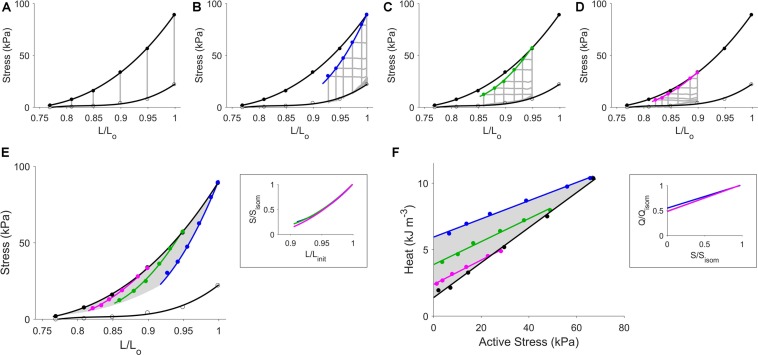FIGURE 3.
Steady-state data from a representative trabecula superfused with Tyrode solution and isoproterenol. Figure caption is the same as that in Figure 2. In panel (A), the isometric end-systolic stress-length relation (upper thick line) and the isometric passive stress-length relation (lower thick line) have been fitted to the six isometric contractions (gray lines) at end-systole (black circles) and at end-diastole (open circles), respectively. These two relations have been transcribed to panels (B–E). The work-loop end-systolic stress-length relation, obtained by fitting to the end-systolic points (filled circles), is dependent on the initial length (lines: blue, green, and magenta, respectively): at Lo (B), 0.95 Lo (C), and 0.90 Lo (D). In panel (E), all stress-length relations are superimposed, where the shaded area indicates the zone of the end-systolic points as interpolated using the self-normalized work-loop stress-length relations in the inset, in which Linit refers to the three initial muscle lengths (Lo, 0.95 Lo, and 0.90 Lo). In panel (F), the shaded area indicates the zone of the heat-stress relations obtained from the three preloaded work-loop contractions and the isometric contractions. The inset shows the three relations between work-loop heat (Q) and stress (S) normalized to their isometric values (subscripted as “isom”).

